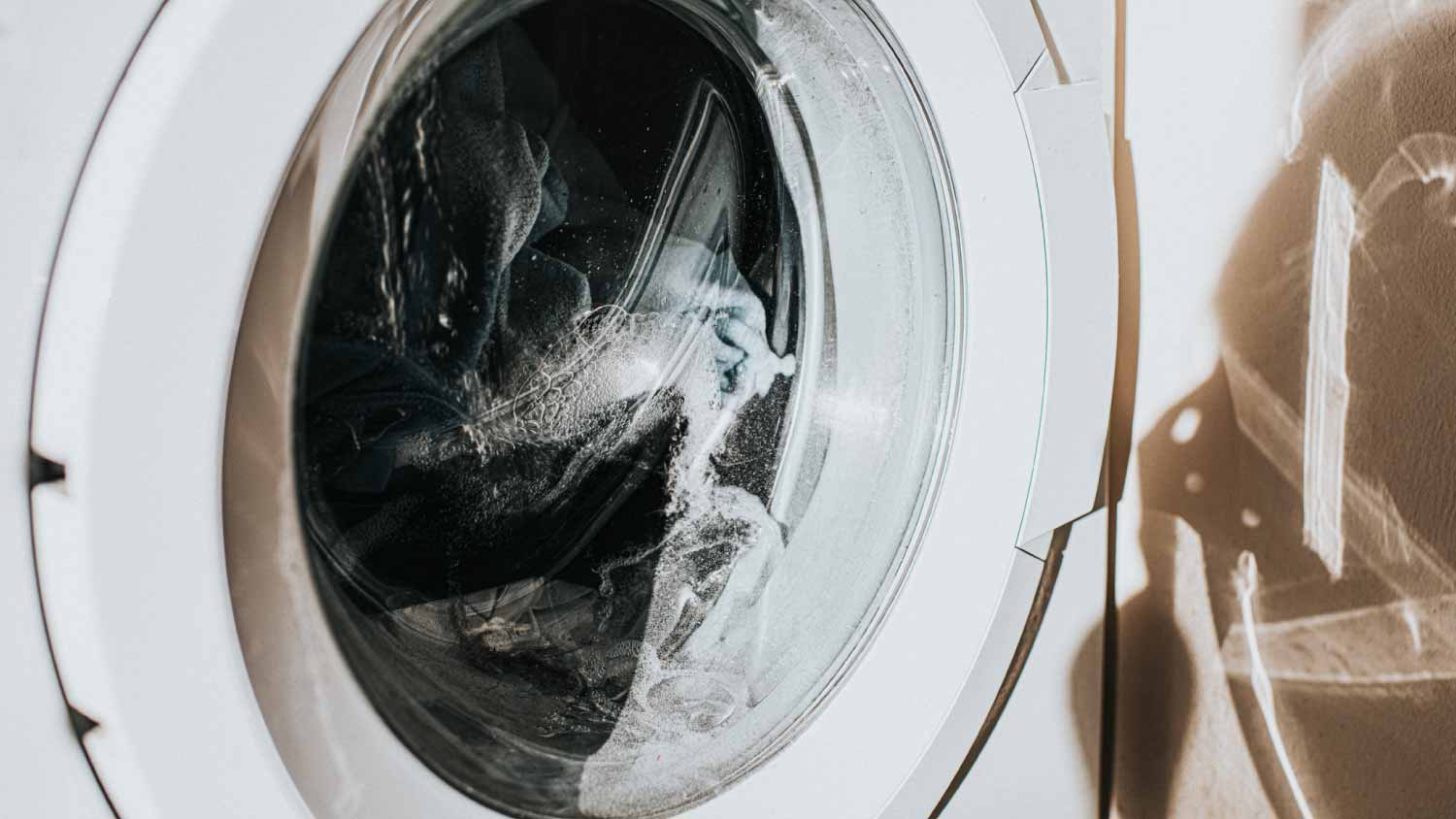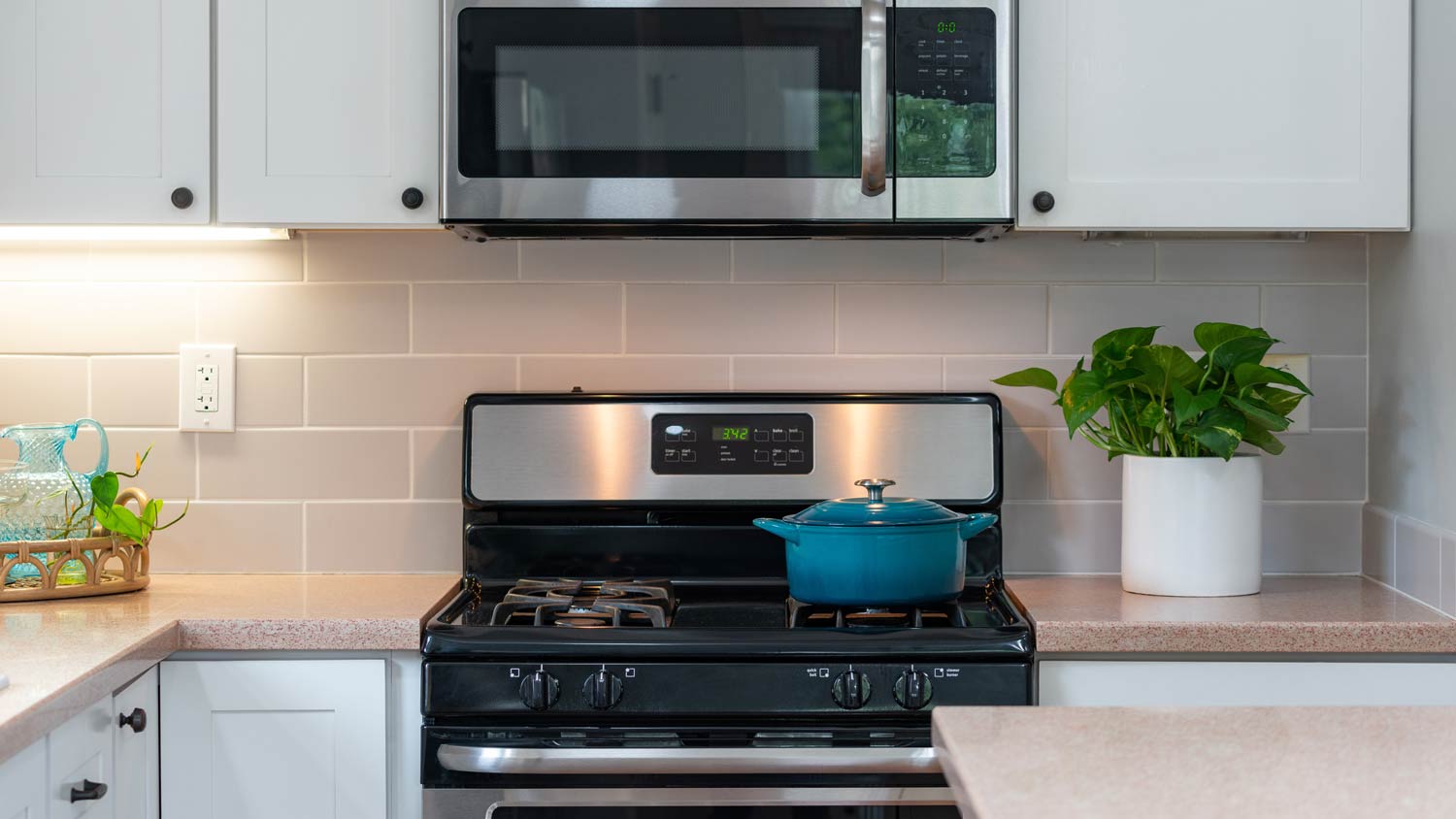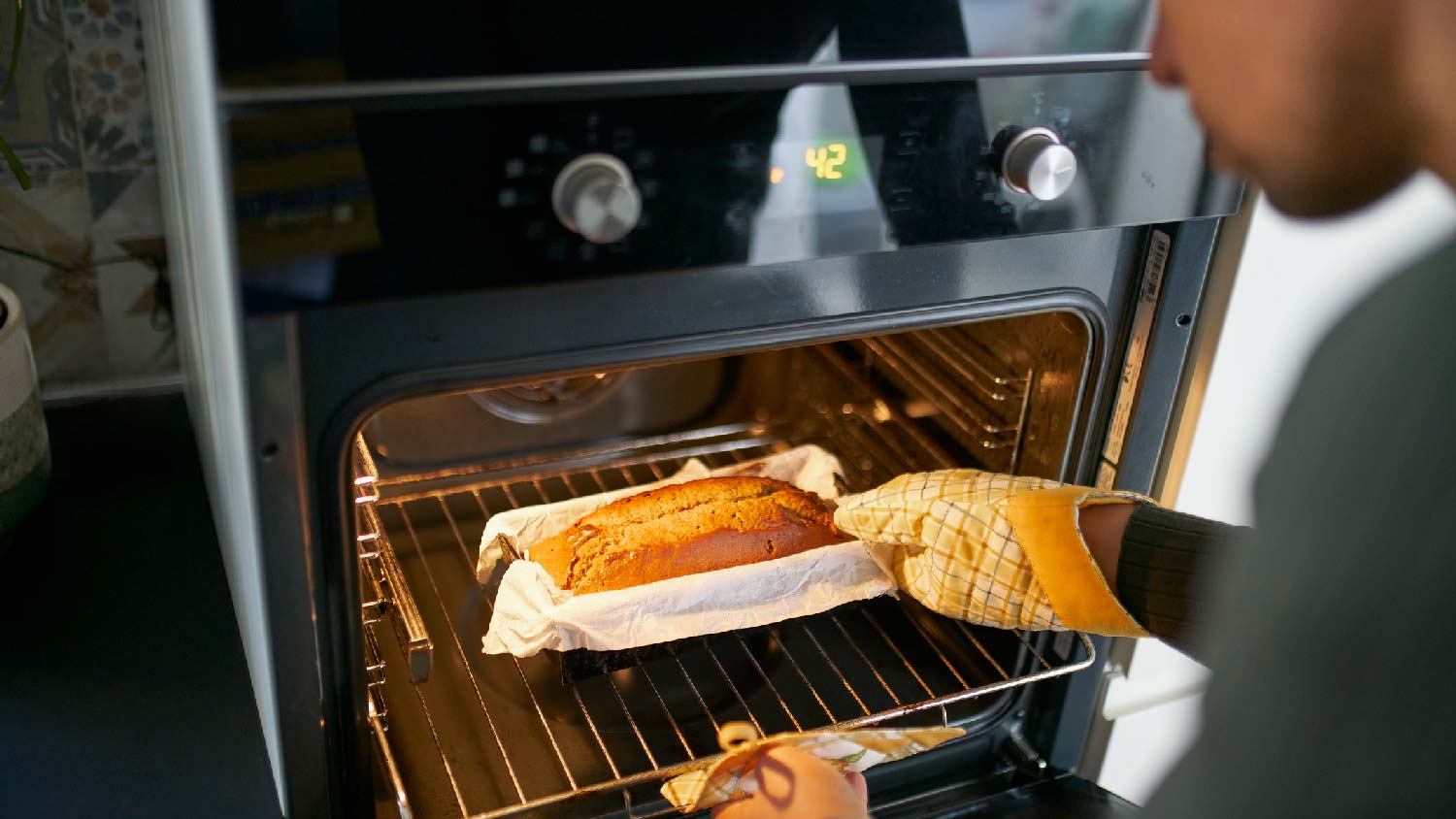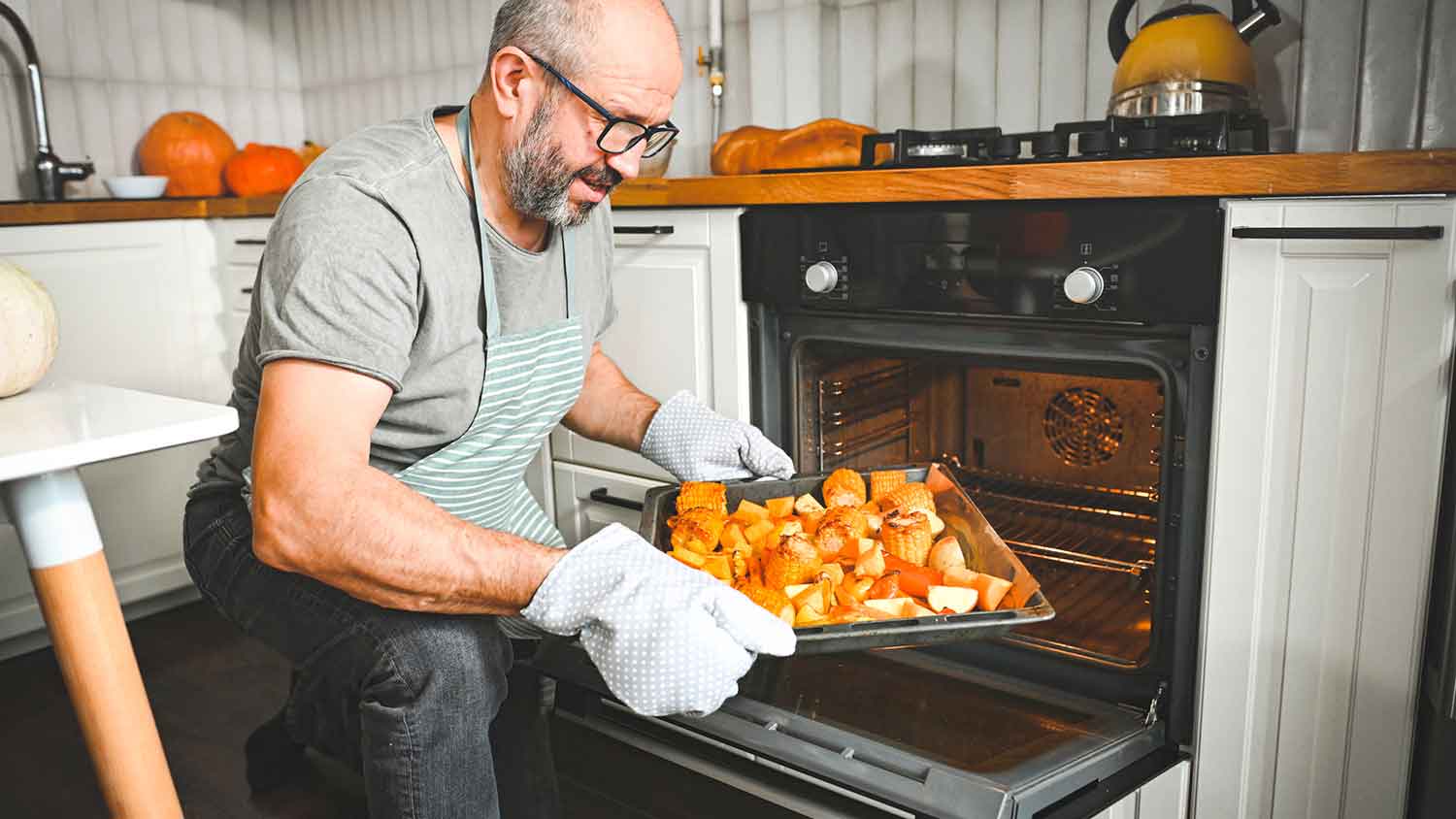7 Common Mistakes That’ll Break Your Oven
Your habits could be hurting your oven in ways you never knew


Our ovens are supposed to be stalwart, and, for the most part, that’s totally true! Ovens are made to be durable, to withstand frequent use at the highest temperatures. That’s why when they do break or malfunction, it can be a shock.
But, just maybe, the problem isn’t your oven—it’s you. Your baking habits might be breaking your appliance, so find out what you’re doing wrong and save yourself the heartache of having to get your oven repaired.
1. Use Abrasive Cleaners
While it’s smart to regularly clean and maintain your oven inside and out, there are some types of cleansers that can do more harm than good. Look for the word “abrasive” on the packaging, and if you see it, stop before your scrubbing can damage the enamel or cause the mechanisms of your oven to malfunction in a major way.
2. Overload It When You Cook
Think about the last time you had a dinner party or hosted for Thanksgiving—overloading the oven is part of the territory. After all, the manufacturer wouldn’t have given you so much space if they didn’t mean for you to use it, right? Wrong!
Cramming trays and dishes into every possible space inside your oven makes it really hard for your oven to work properly. That’s because hot air can’t circulate, which is a fire hazard and can cause serious damage—not just to your oven, but to your entire home.
3. Put Foil on the Bottom
It can seem like putting foil on the bottom of your oven is a no-brainer way to catch a mess and make cleaning easier, but it’s actually just a shortcut to breaking your oven.
When you put foil down there, you may catch drippings, but you also hinder airflow and can potentially damage the heating element, leading to total oven failure.
4. Only Use the Self-Cleaning Feature
Ovens equipped with the self-cleaning feature work by blasting temperatures up to 500 or 600 F. This can push your oven to its limits.
While self-cleaning is a helpful feature, it isn’t designed to handle a mess that’s been building for weeks or months. That’s why it’s critical to manually clean your oven regularly in addition to using the self-cleaning tool. It’s like cleaning up for room service; it just helps your oven do the best job possible when you hit that self-clean button.
5. Ignore the Range Hood
The hood above your stove (called the range hood) is designed to more than just look good. Its built-in fan helps disperse heat and clears smoke from your home. But just because it’s over your head doesn’t mean you should overlook it (get it?).
Oven ranges need to be cleaned regularly. The smoke from your range is oily, and that build-up can cause a fire.
6. Use It as a Heat Source
Your oven is designed to cook food. While it can produce a lot of heat, it isn’t designed to heat your home or even just your kitchen. Using it this way can cause your appliance to malfunction in the long term.
It’s also very, very dangerous to try heating your home with your oven. Gas leaks can cause death, and the threat of fire is a very real one. Make sure your oven is closed at all times when you are cooking.
7. Ignore Moisture on the Oven Door
You might not often think about this part of your oven, but if you want to keep your appliance in tip-top shape, you should pay attention to your oven door. A telltale sign that something is wrong with your oven is if moisture collects on your glass oven door. This means hot air is escaping and that the seal needs to be replaced. Without that seal, it is impossible for your oven to regulate its temperature correctly—and it’ll be obvious in your cooking.
But if it’s a little too late for you oven, don’t sweat it—a local oven repair company can get your appliance back up and running.





- Appliance Repair Companies
- Washing Machine Repair
- Dryer Repair
- Refrigerator Repair
- Dishwasher Repair
- Oven Repair
- Wood & Pellet Stove Repair
- Freezer Repair Services
- Wood Stove Services
- Gas Stove Repair
- Emergency Appliance Repair Companies
- Ice Maker Repair
- Gas Appliance Repair
- GE Appliance Repair
- GE Refrigerator Repair
- GE Dryer Repair
- GE Dishwasher Repair
- GE Washing Machine Repair
- Samsung Appliance Repair
- Samsung Refrigerator Repair
- Samsung Dryer Repair
- Samsung Washer Repair
- Samsung Dishwasher Repair
- Samsung Oven Repair
- Whirlpool Repair
- Whirlpool Refrigerator Repair
- Whirlpool Washer Repair
- Whirlpool Dryer Repair
- Whirlpool Oven Repair
- Maytag Appliance Repair
- Maytag Refrigerator Repair
- Maytag Washer Repair
- Maytag Dryer Repair
- Maytag Dishwasher Repair
- Kitchenaid Appliance Repair
- Kitchenaid Oven Repair
- Kitchenaid Refrigerator Repair
- Kenmore Appliance Repair
- Kenmore Dishwasher Repair
- Kenmore Washer Repair
- Kenmore Dryer Repair
- LG Refrigerator Repair
- Bosch Appliance Repair
- Kenmore Refrigerator Repair
- LG Appliance Repair Services
- GE Microwave Repair
- Electrolux Appliance Repair
- Electrolux Washer Repair
- Kitchenaid Dishwasher Repair Services
- Wood Stove Inspection
- Dishwasher Installation
- Trash Compactor Repair










